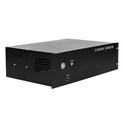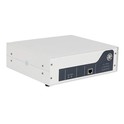Hey there! As a supplier of 500w ultrasonic generators, I often get asked whether a 500w ultrasonic generator can be used for ultrasonic extraction. So, I thought I'd write this blog to share my insights on the topic.
First off, let's quickly go over what ultrasonic extraction is. Ultrasonic extraction is a technique that uses ultrasonic waves to extract compounds from plant materials, herbs, and other substances. The ultrasonic waves create tiny bubbles in the solvent through a process called cavitation. When these bubbles collapse, they generate high-pressure shockwaves that break the cell walls of the plant material, releasing the desired compounds into the solvent.
Now, the question is, can a 500w ultrasonic generator do the job? The short answer is yes, it can, but it depends on a few factors.
Factors to Consider
1. Sample Size
The size of the sample you're working with is a crucial factor. A 500w ultrasonic generator is suitable for small to medium - sized samples. If you're dealing with a large amount of plant material, say several kilograms, a 500w generator might not have enough power to efficiently break down all the cell walls. For larger samples, you might want to consider more powerful options like the 6000W Ultrasonic Generator or the 4000W Ultrasonic Generator. However, if you're just doing some small - scale experiments or working with a few grams of material, a 500w generator will work just fine.
2. Type of Material
Different plant materials have different cell wall structures. Some are more robust and require more energy to break down. For example, materials with thick, tough cell walls like certain tree barks or hard seeds will need more power compared to softer materials like leaves or flowers. If you're working with relatively soft materials, a 500w ultrasonic generator can be effective in extracting the compounds. But for the tougher ones, you may need to increase the power or the extraction time.
3. Desired Extraction Efficiency
How quickly and completely you want to extract the compounds also matters. If you're in a hurry and want a high - efficiency extraction, a more powerful generator might be better. A 500w generator will work, but it may take longer to achieve the same level of extraction as a more powerful one. On the other hand, if you're not in a rush and are okay with a slower extraction process, a 500w generator can still give you good results.
Advantages of Using a 500w Ultrasonic Generator for Extraction
1. Cost - Effective
One of the biggest advantages of a 500w ultrasonic generator is its cost. It's generally more affordable than higher - power models. If you're just starting out with ultrasonic extraction or have a limited budget, a 500w generator is a great option. You can get started with your extraction experiments without breaking the bank.
2. Energy - Efficient
Compared to higher - power generators, a 500w ultrasonic generator consumes less energy. This not only saves you money on your electricity bill but also makes it a more environmentally friendly choice. It's a win - win situation, especially if you're running your extraction process for long periods.
3. Compact and Portable
500w ultrasonic generators are usually more compact and easier to move around. If you have limited space in your lab or need to transport the equipment, a 500w generator is a convenient option. You can easily set it up on a small bench or take it with you to different locations.
Tips for Using a 500w Ultrasonic Generator for Extraction
1. Choose the Right Solvent
The choice of solvent is important for a successful extraction. Different solvents have different abilities to dissolve the target compounds. Make sure you choose a solvent that is compatible with your sample and the compounds you want to extract. Common solvents used in ultrasonic extraction include water, ethanol, and methanol.
2. Optimize the Extraction Time
Since a 500w generator has limited power, you may need to adjust the extraction time. Start with a shorter time and gradually increase it if you're not getting the desired results. However, be careful not to over - extract, as this can lead to the degradation of the compounds or the extraction of unwanted impurities.
3. Maintain the Generator
Regular maintenance of the ultrasonic generator is essential to ensure its proper functioning. Keep the generator clean and follow the manufacturer's instructions for maintenance. This will help prolong its lifespan and ensure consistent performance.
When to Upgrade
If you find that your 500w ultrasonic generator is not meeting your needs, it might be time to upgrade. Here are some signs that you should consider a more powerful generator:
- You're constantly working with large samples and the extraction process is taking too long.
- You're dealing with tough materials that are not being effectively broken down.
- You need a high - efficiency extraction for commercial purposes.
In such cases, you can look into more powerful options like the 2000W Ultrasonic Generator, 4000W Ultrasonic Generator, or 6000W Ultrasonic Generator.
Conclusion
In conclusion, a 500w ultrasonic generator can be used for ultrasonic extraction, especially for small - to medium - sized samples and softer materials. It offers several advantages such as cost - effectiveness, energy efficiency, and portability. However, its effectiveness depends on factors like sample size, material type, and desired extraction efficiency. If you're just starting out or have limited requirements, a 500w generator is a great choice. But if your needs grow, don't hesitate to upgrade to a more powerful model.
If you're interested in purchasing a 500w ultrasonic generator or have any questions about ultrasonic extraction, feel free to reach out. We're here to help you make the right choice for your extraction needs.


References
- Mason, T. J., & Peters, P. J. (2002). Practical sonochemistry: power ultrasound uses in chemistry. Ellis Horwood.
- Vinatoru, M. (2001). An overview of the ultrasonically assisted extraction of bioactive principles from herbs. Ultrasonics sonochemistry, 8(3), 303 - 313.





